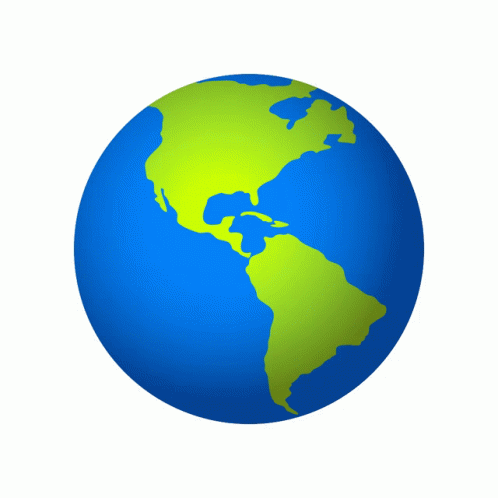Serbia, at the heart of the Balkans, is one of Europe’s most intriguing yet underrated destinations. In 2025, the country combines a rich cultural heritage, lively cities, natural landscapes, and affordability that make it attractive for both short visits and longer stays. From the nightlife of Belgrade to the vineyards of Vojvodina, the ski slopes of Kopaonik, and the Danube’s Iron Gates, Serbia is a land of contrasts that offers tourism opportunities year‑round. This guide explores tourism potential, travel costs, healthcare, public infrastructure, visa rules, relocation prospects, and more — all written in a narrative, SEO‑optimized format.
Why Serbia, Why Now: Tourism Potential
Serbia has long been a meeting point of empires, and this layered history shows in its architecture, cuisine, and culture. Tourism opportunities are diverse: the capital Belgrade is famous for its fortress views over the Danube and Sava, its café culture, and nightlife that ranks among Europe’s best. Novi Sad, with its Petrovaradin Fortress, hosts the EXIT Festival, attracting music fans from around the world. In the south, Niš tells stories of Roman emperors and Ottoman rule, while the countryside is dotted with Orthodox monasteries, spa towns, and vineyards. National parks like Tara and Đerdap offer hiking, wildlife, and river landscapes that rival more famous European destinations.
Best Time to Visit
The shoulder seasons of May–June and September–October are ideal for cultural exploration, hiking, and city breaks. Summer (July–August) brings hot weather but also major events such as EXIT Festival in Novi Sad and Belgrade Beer Fest. Winter (December–March) is ski season in Kopaonik, Zlatibor, and Stara Planina. Spring offers blooming landscapes and Orthodox Easter celebrations, when traditions and hospitality are on full display.
Getting There & Around
Serbia’s main gateway is Belgrade Nikola Tesla Airport (BEG), served by Air Serbia and numerous international carriers. Niš Constantine the Great Airport (INI) offers low‑cost flights, while Morava Airport (KVO) connects central Serbia to select destinations. By rail, Serbia links with Budapest, Vienna, and Sofia, with modernized high‑speed service on Belgrade–Novi Sad now operating. Buses are the most common domestic transport, linking cities and towns reliably. Roads are improving, with new motorways extending across the country, but rural driving requires patience and caution.
Where to Go: A Regional Guide
Belgrade: The capital is vibrant, with Kalemegdan Fortress, Knez Mihailova pedestrian street, and the floating river clubs (splavovi). Novi Sad & Vojvodina: Serbia’s cultural hub, with vineyards, baroque towns, and Danube plain landscapes. Niš & Southern Serbia: Roman ruins, Ottoman fortresses, and spa towns. Western Serbia: Tara National Park, Mokra Gora with the Šargan Eight heritage railway, and Drina River rafting. Eastern Serbia: Đerdap Gorge (Iron Gates) on the Danube, Lepenski Vir archaeological site, and rural monasteries. Central Serbia: Kopaonik ski resort, Studenica Monastery, and traditional villages.
Traveler Experiences
Visitors highlight the warmth of Serbian hospitality and the lively café culture that dominates daily life. Belgrade’s nightlife is legendary, with venues along the rivers attracting crowds until dawn. Travelers also praise the affordability: dining out is inexpensive, and accommodation is often half the price of nearby EU countries. Nature lovers rave about Tara National Park and the Danube’s dramatic landscapes, while music fans return annually for EXIT Festival. Some note that bureaucracy and occasional infrastructure gaps can be challenges, but the authenticity and value more than compensate.
Costs in 2025: Hotels, Airbnb, Daily Budgets
Hotels in Belgrade average €60–€90 per night, with boutique options in the center. Novi Sad and Niš are cheaper, often €40–€70. Airbnb apartments in Belgrade range €35–€60 per night for central locations. Daily midrange budgets run €60–€90, including meals, accommodation, and transport. Backpackers report surviving on €40 daily by using hostels and bakeries, while upscale travelers enjoy luxury hotels for €150–€200 a night.
Healthcare & Emergencies
Serbia’s healthcare system is public but under pressure, with hospitals concentrated in major cities. Private clinics, especially in Belgrade, Novi Sad, and Niš, offer faster service and English‑speaking staff. Travelers should carry comprehensive insurance. Emergency number 194 connects to medical services; 192 for police, 193 for fire.
Public Infrastructure
Roads: Serbia has been expanding its motorway network, with E‑75 running north–south and E‑70 linking to Croatia. Rail: High‑speed Belgrade–Novi Sad trains cut travel to 30 minutes. Long‑distance trains remain slow but scenic. Buses: Reliable and inexpensive, covering the entire country. Utilities and internet: Broadband coverage is widespread, and mobile internet is affordable, a plus for digital nomads.
Visa Rules in 2025
Serbia allows visa‑free entry for up to 90 days for EU, UK, U.S., Canadian, and many other passport holders. Travelers with valid Schengen visas, UK BRPs, or U.S. visas can also enter for short stays, provided those visas have been used before. Each traveler must qualify independently—one person’s visa or permit does not extend to companions. Long‑stay permits are available for work, study, or family reunification.
Cost of Living & Relocation
Expats and digital nomads find Serbia affordable compared with Western Europe. In Belgrade, monthly rent for a central one‑bedroom averages €500–€700, while utilities and groceries add €300–€400. Couples report monthly costs around €1,200–€1,500 for comfortable living. Cafés, co‑working spaces, and a growing startup scene attract remote workers, though bureaucracy for residence permits can be challenging.
Safety & Etiquette
Serbia is generally safe, with low violent crime rates. Petty theft can occur in crowded areas, so normal precautions apply. Driving requires care, especially in rural areas where roads can be narrow. Respect cultural sites, especially monasteries, by dressing modestly. Serbs are proud of their hospitality; learning a few words of Serbian such as ‘hvala’ (thank you) goes a long way.
Conclusion: Serbia in 2025
Serbia blends culture, history, affordability, and natural beauty in a compact package. From Belgrade’s nightlife to Tara’s forests, Kopaonik’s ski slopes to Novi Sad’s festivals, it delivers diversity year‑round. As infrastructure improves and global awareness grows, Serbia is positioned as one of Europe’s most rewarding tourism opportunities in 2025.
References & Sources
Sources include: National Tourism Organisation of Serbia (NTOS), Lonely Planet Serbia (2025 updates), U.S. State Department Travel Advisory, UK FCDO Travel Advice, Numbeo Cost of Living, BudgetYourTrip, Airbnb/Airdna data, and regional press on transport infrastructure (Belgrade–Novi Sad railway, E‑75 motorway expansions).

